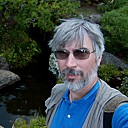Wesley R. Elsberry

Posts: 4966
Joined: May 2002
|
| Quote |
But the kind of creation science those decisions had gone against is characterized by the claim that the world is a mere 6,000 to 100,000 years old, rather than the currently favored age of 4 billion or so years old.
|
It seems to me that the tremendous respect that Plantinga is offered by religious people is entirely misplaced. The above statement is a complete fiction, excusable only by utter ignorance, and that in turn means that Plantinga is a lazy pontificator, expressing his prejudices without bothering to look at the evidence. This point was covered extensively in the trial transcript of the Kitzmiller case, and also is the subject of an affidavit entered in the Edwards case. "Creation science", as given in the affidavit of Dean Kenyon for the Edwards case, and as Judge Jones found in the Kitzmiller case, does not rely upon scriptural sources and does not commit itself to a young earth:
| Quote |
9. Definitions of Creation-Science and Evolution. Creation-science means origin through abrupt appearance in complex form, and includes biological creation, biochemical creation (or chemical creation), and cosmic creation. Evolution-science is equivalent to evolution. Evolution is generally understood by scientists (although some would disagree) to include biological evolution (or organic evolution) from simple life to all plants and animals, biochemical evolution (or chemical evolution or prebiotic evolution of the first life), and cosmic evolution (including stellar evolution) (of the universe). Creation-science does not include as essential parts the concepts of catastrophism, a world-wide flood, a recent inception of the earth or life, from nothingness (ex nihilo), the concept of kinds, or any concepts from Genesis or other religious texts. The subject of origins is a part of evolution, and the origin of the first life and tre-origin of the universe are generally regarded by the scientific community as part of evolution.
(Source: Dean Kenyon affidavit)
|
And then from the Kitzmiller trial record:
| Quote |
[171]BY MR. ROTHSCHILD:
[172]Q. Could you read that into the record, Dr. Forrest?
[173]A. Yes. "Definitions of creation science and evolution. Creation science means origin through abrupt appearance in complex forms, and includes biological creation, biochemical creation or chemical creation, and cosmic creation."
[174]Q. Why is that statement in
[175]Dr. Kenyon's affidavit important to your opinion about intelligent design?
[176]A. That statement is important because it reflects the definition in Pandas.
[177]Q. And when you say the definition in Pandas what is the term that's defined the Pandas?
[178]A. The term in Pandas is intelligent design. It's pretty much the same definition here that he's giving for creation science.
[179]Q. And we're going to look at some of that language in Pandas later, but why don't we go on to the next highlighted passage. Why don't you go ahead and read that.
[180]A. "Creation science does not include as essential parts the concept of catastrophism, a worldwide flood, a recent inception of the earth or life from nothingness, ex nihilo, the concept of time, or any concepts from Genesis or other religious texts."
[181]Q. Why is that important to your opinion?
[182]A. That's important because it recognizes that there are different types of creationism, that it's broader than just young earth creationism.
[183]Q. And I think we have one more passage highlighted, Matt.
[184]A. "Sole alternative to scientific explanation, it is not only my professional opinion, but that of many leading evolutionists scientists at present and in the past, that creati on science and evolution are the sole scientific alternative, scientific explanation, although each includes a variety of approaches. Either plants and animals evolved from one or more initial living form, biological evolution, or they were created, biological creation."
[185]Q. Why is that important?
[186]A. That's important because he's setting out what is called the dual model, or the two model view of evolution and creation, which means that he considers these the only two alternatives.
[187]Q. And why is that significant to the issue of intelligent design?
[188]A. That's significant here because in 1986 when Dr. Kenyon wrote this he was also working on Pandas the same year, and the two model approach means that if the idea of evolution is undermined, that leaves creation science by default. It also indicates that since he was working Pandas and that book speaks as an intelligent design theorist, he doesn't see any significant distinction between the two, between creation science and intelligent design.
|
And from the Kitzmiller decision:
| Quote |
Although contrary to Fuller, defense experts Professors Behe and Minnich testified that ID is not creationism, their testimony was primarily by way of bare assertion and it failed to directly rebut the creationist history of Pandas or other evidence presented by Plaintiffs showing the commonality between creationism and ID. The sole argument Defendants made to distinguish creationism from ID was their assertion that the term "creationism" applies only to arguments based on the Book of Genesis, a young earth, and a catastrophic Noaich flood; however, substantial evidence established that this is only one form of creationism, including the chart that was distributed to the Board Curriculum Committee, as will be described below. (P-149 at 2; [156]10:129-32 (Forrest); P-555 at 22-24).
|
So, the interesting question is, why is Plantinga telling people falsehoods that are so trivially discovered and made known? Is he a lazy non-scholar when it comes to this issue, or is he a well-informed demagogue who understood the records of these two trials but chose to misrepresent them?
--------------
"You can't teach an old dogma new tricks." - Dorothy Parker
|


















